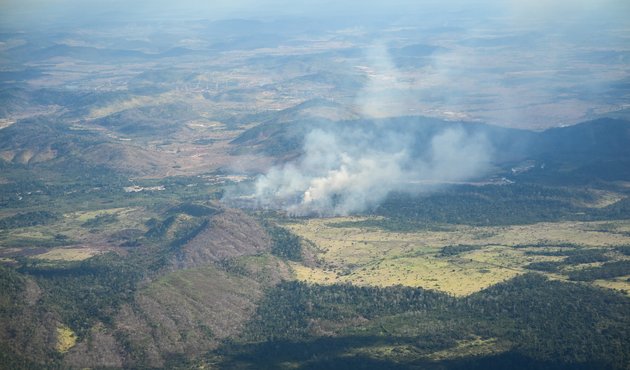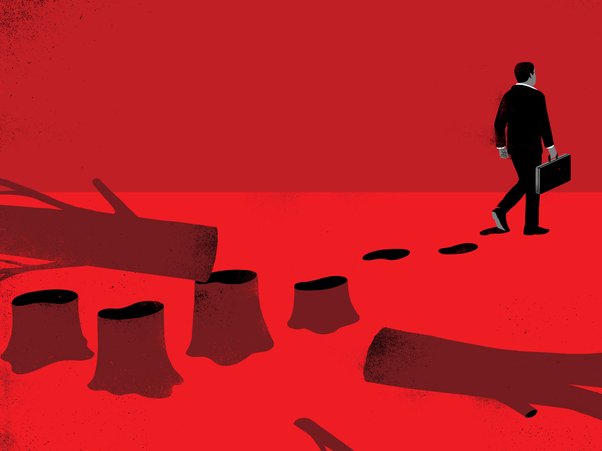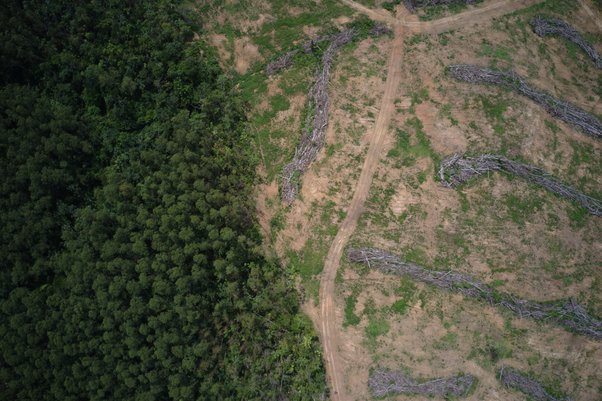How we investigated the complex supply chain bringing Brazilian beef from the forest to your fork
This week, a Global Witness exposé reveals how Brazil’s biggest beef trading companies – JBS, Marfrig and Minerva – are linked to tens of thousands of hectares of illegal deforestation in the Amazon state of Pará.
Despite relatively clean bills of health in private audits conducted in 2017, 2018 and 2019, our analysis shows how the firms’ suppliers – both direct and indirect – are deliberately flouting the law, with the companies themselves turning a blind eye.
For the companies' responses to our findings, see the full report.
For technical details about the data and analysis behind the report, check out our GitHub repository.
To conduct this analysis, Global Witness’s data investigations team had to build a picture of the beef traders’ supply chains.
We used documents called animal transit guides (GTAs), filed by ranches with the Pará state agriculture agency when they move animals around – for example, when selling cows for slaughter or export.
The GTAs are available to consult one-by-one through an online portal.
By guessing the documents’ ID numbers and automating the process with a technique known as web scraping, we were able to obtain more than three million GTAs dating from 2014 to 2020.
Animal transit guides are just one piece of the puzzle. To quantify deforestation, Global Witness used a data set called PRODES, published by Brazil’s federal space agency, which shows areas of deforestation detected in satellite imagery.
We then overlaid this data with information from the Pará state rural environmental register (CAR), which shows the boundaries of ranches, self-reported by their owners.
The three data sources were combined automatically to throw up a series of suspect ranches, which were then investigated manually by Global Witness researchers.
But there’s more that we can do with the GTA data.
As well as providing the raw material for case studies of illegal deforestation, it also presents a bird’s-eye view of the three beef traders’ supply chains in Brazil’s second-largest state.
It’s clear that, despite Pará’s considerable size, cattle-rearing is largely concentrated in the south of the state.
As the map above shows, the municipality of São Félix do Xingu dominates sales to JBS, Marfrig and Minerva, serving as the source of more than 590,000 animals between 2017 and 2019, almost twice that of the next most popular area, neighbouring Cumaru do Norte.
Many of our report’s case studies – including one in which a farm appears to have deliberately manipulated its boundaries to get around anti-deforestation commitments – involve ranches located in "SFX", as the municipality is colloquially known.
The owner of this ranch in São Félix do Xingu modified the property’s official boundaries between 2016 and 2018 to exclude two areas of deforestation, allowing it to continue selling to a major beef company.
As well as being geographically concentrated, the beef traders’ purchases tend to favour certain types of ranch.
Often, these are farms with huge cattle herds, exploiting economies of scale to cut down on costs – but the companies also take advantage of a significant pool of smaller farms which sell to them only occasionally.
In the case of Marfrig, direct suppliers who sold less than 1,000 cattle to the company between 2017 and 2019 make up more than a third of its total purchases over the period.
This situation is even more pronounced in the case of indirect suppliers: those ranches selling cattle for fattening to the beef traders’ ultimate suppliers.
As the chart below shows, while mega-ranches remain dominant, farms of less than 150 hectares are much more common among indirect suppliers than among direct suppliers.
The average direct supplier to JBS, Marfrig and Minerva between 2017 and 2019 spanned more than 1,000 hectares, while the average indirect supplier was less than half the size.
The larger a company’s pool of suppliers, the more deforestation risk is introduced into its supply chain.
Developing a complex network of suppliers is a business decision, and no excuse for failing to properly monitor it – but Brazil’s big beef companies continue to claim that using freely available GTA documents to track their own purchases is impossible.
This position keeps them in the good graces of major global financial institutions, which have underwritten billions of dollars in bonds to bankroll the firms’ expansion.
When contacted for comment on their cattle purchases from a list of 379 suspect ranches, JBS, Marfrig and Minerva said that all sales for which they had records were compliant with their voluntary and legal anti-deforestation commitments.
Global Witness’s new report shows that combining public data on deforestation, farms and cattle sales creates a powerful lens through which to inspect cattle supply chains in Pará – and our methodology could be extended to other Amazon states and to other commodities associated with deforestation, such as soy.
If we can do it, so can multinational companies with billions of pounds in revenue each year.
Ultimately, though, conducting this kind of analysis shouldn’t be as difficult as it is.
If state authorities in Brazil published GTA data in bulk, then auditors, NGOs and other civil society groups would be able to inspect companies’ supply chains without having to develop complicated web scraping tools.
If they’re really interested in complying with their environmental commitments, the companies themselves could also do much more to open up access to their supply chains, rather than hiding behind technicalities.



